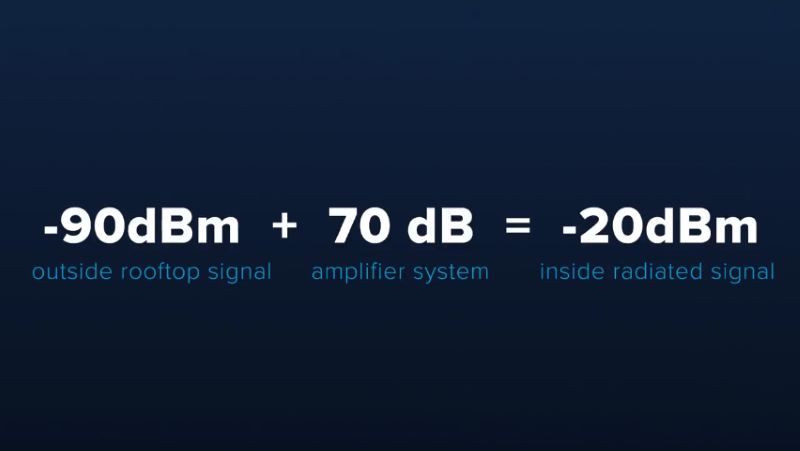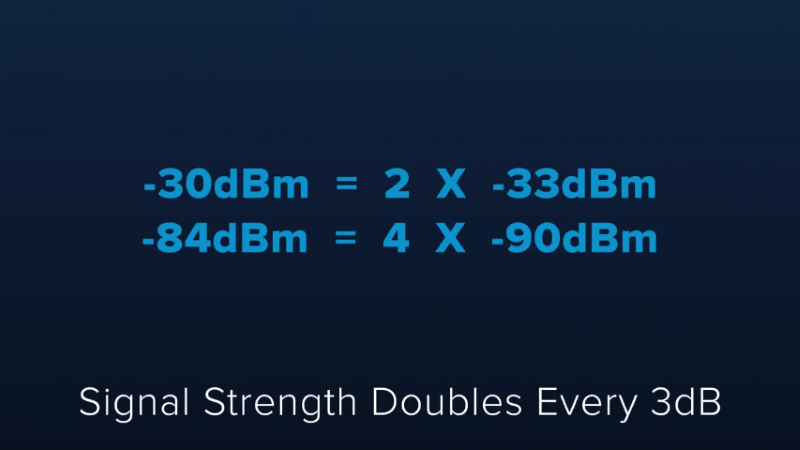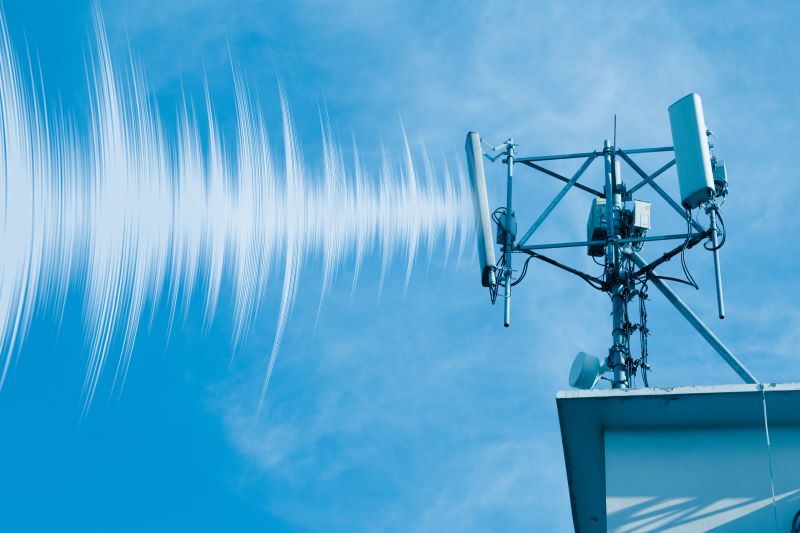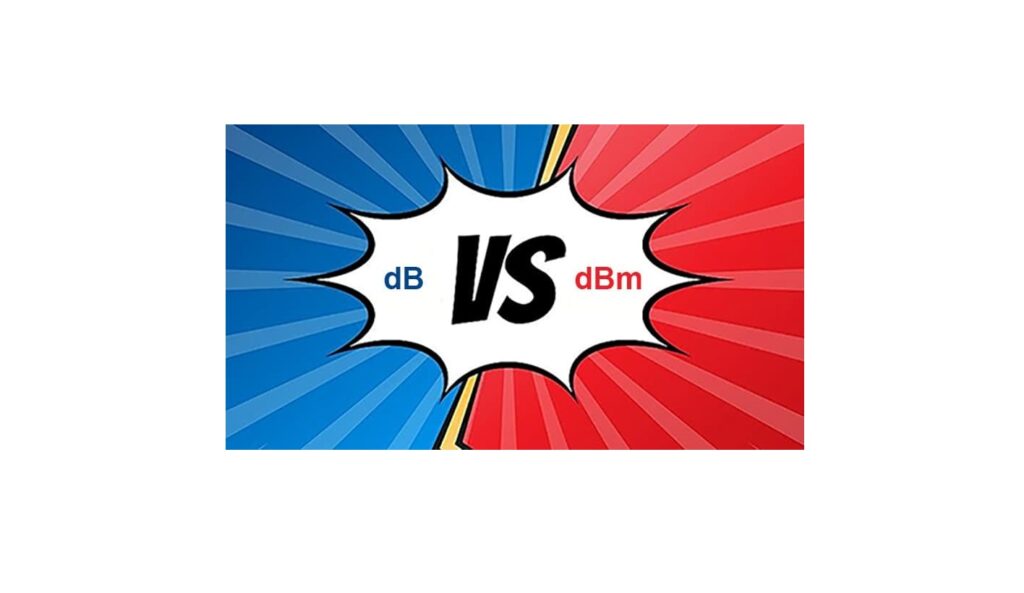Difference Between dB and dBm-When looking for cell signal solutions, you may come across the terms “dB” and “dBm” being used to define the strength of signal amplifier devices. Both words are used to describe the intensity of cellular signals. But what exactly do such phrases imply? Here’s a look at how decibels (dB) and decibel milliwatts (dBm) are used to assess the intensity of cellular signals.
What Is a dB?
Decibels are denoted by the notation dB. The amount of rising or decreasing in a signal is measured in decibels. Decibels are useful for estimating the amount of signal intensity generated by an amplifier system, as well as how much signal the system will create once installed.
By adding the amount of gain (expressed in dB) from the amplifier to the signal strength of a location, the quantity of signal that would be created by installing an amplifier may be estimated. After adding an amplifier, the resulting value will indicate the indoor cellular strength you’ll be able to receive.

What is dBm?
The decibel milliwatts (dBm) acronym stands for decibel in relation to milliwatts. It refers to the amount of power that an antenna or amplifier can create, as well as the quantity of signal present at a given location. Decibel milliwatts are measured with milliwatts, as the name implies. It’s a metric for determining the intensity of a cell phone signal at a location.
- A signal that is about -70dBm or greater is considered strong.
- A weak signal is defined as one that is less than -100dBm.
It’s important to note that dBm and dB are two distinct measurements. dBm = dB+30, therefore 0dB equals 30dBm, is a commonly repeated ‘formula.’ This is a gross oversimplification that is also wrong.
It’s worth noting that decibels are a unit of relative power that can’t be translated to watts. The difference between two dBm numbers can be measured using dB. The two dBm under consideration can be converted to watts, but dB cannot.
If you want to understand how cellular signal boosters’ function, you’ll need to know what the two measures represent and what they’re used for.

The Power of Logarithmic Scales: Higher Means Stronger
When looking at a decibel reading, it’s easy to misjudge how powerful a signal is.
The units of dB and dBm are not linear, but logarithmic. This implies that the way most of us think about magnitude is incorrect.
On a linear scale, an increase from -80 dB to -77 dB may not seem like much because it’s only 2.4 percent, but it’s a considerably greater difference on the dB scale.
Logarithmic scales are used to depict extremely huge numbers on a manageable scale. Each rise of three dB in dB implies that the signal intensity has doubled as seen in the graph below:

Signal Strength and Your Cell Phone
Most mobile phone users use the number of bars to determine the strength of their phone’s signal. However, unlike a dB measurement of signal intensity, these bars don’t provide much information.
Unfortunately, among mobile phone manufacturers, there is no agreed-upon definition of “four bars of signal.” One person may have one bar on their signal strength readout on their phone and still be able to make and receive calls and text messages. Another individual could see two bars and their SMS messages could be stalled on “sending” for several minutes.
Instead, by unlocking the diagnostic capabilities on their phones, users may receive a precise estimate of the strength of a cellular signal. Most iOS and Android devices may be put into test mode with this tutorial, which gives you access to tools that indicate the signal strength in decibels, which integrators can deal with more readily.
As previously stated, the dB scale is logarithmic, thus a 3dB rise equals a power gain of twice as much. The signal power of a cell tower or antenna may be roughly doubled with a 6dB increase.
3G vs 4G Signal Strengths
Desirable signal levels for 3G and 4G are close in most cases, although they are not identical. This is due to the fact that 3G and 4G use different frequencies.
For 3G, a signal strength of -70 dBm is regarded as outstanding, while for 4G, a measurement of -90 dBm is deemed exceptional. -110 dBm is deemed a “dead zone” for 3G service, but just a “poor signal” for 4G.
Signal strength recommendations for 5G will be different once again. While 5G’s theoretical maximum speeds are faster, the technology is more sensitive to interference and signal degradation, thus some individuals may experience very weak 5G connections while in office buildings or densely populated locations.
How Strong of a Signal Do You Really Need?
To have a conversation via a cellular connection, your signal strength should be about -100 dBm.
To send data via 4G at reasonable rates, a signal strength of -100 dBm is also necessary. If the signal strength drops below -105 dBm, the link is unlikely to go completely dead, but speeds will visibly reduce.
The ‘dead zone’ for 4G is -120 dBm although the connection would have to slow to the point of being useless before the signal strength drops that low.
Signal enhancers can help you increase the stability and speed of your connection. However, it’s critical to select the correct booster for your property type. A strong booster intended to cover the area of the property may help commercial retail spaces, offices, and other large venues, and the booster would need to be placed properly for optimum coverage.
It may be required to install numerous boosters, each with a different donor antenna, in certain extremely big locations with significant foot traffic, so that all users of the facility may have a pleasant experience when using their mobile devices.

Boosting the Signal
If you work in a building with poor mobile service, here’s the good news: you should be able to resolve the problem with the help of a 4G signal booster.
The signal may be boosted using a booster as long as there is some signal for it to pick up. If you can place an antenna in a signal-rich region, the signal may be sent to a booster unit, which can then broadcast the signal to sections of your building that would otherwise be dead zones.
All main networks are supported by cellular signal enhancers. They don’t care about the carrier and just pick up a signal and amplify it. They do not require an internet connection to utilize, unlike network-specific boosting solutions like those supplied by Verizon. Numerous people and multiple devices can utilize cell phone signal boosters without any problems.
dB vs dBm
When a physical quantity is measured in relation to a reference level, such as power or intensity, it is represented in decibels (dB), a logarithmic unit. Because it is a ratio of two values with the same unit, the decibel is called a dimensionless unit. It is used to calculate the ratio of two values. The signal-to-noise ratio is the finest example of this.
Although sound pressure is commonly measured in decibels (dB), the unit is not restricted to that value. This measuring instrument has a wide range of applications, notably in engineering. Because it is used to measure signals, it may be used to measure anything that can be described in waves. dB is widely used in the fields of acoustics and electronics.
To be more precise, decibel dB is defined as dB = 10 log (P1/P2), where P1 and P2 are two distinct power levels.
It is largely utilized because it can convert a massive number into a manageable size. Values in radio link designs can differ greatly, and decibel is employed to contrast these values. Its logarithmic characteristics facilitate computation. Engineers and physicists may now compute values using easy few-digit numbers instead of laborious 9 to 10-digit ones thanks to the adoption of dB.
dBm is not the same as dB, but it is linked to it. The unit dBm stands for decibels per meter of power. It refers to the milliwatt, a different type of power unit.
Mathematically,
dBm=10\times log(\frac{P}{1mW})
The letter “P” stands for power in watts. The absolute power unit “P” can then be converted to dBm with some further calculations. The value of power level “P” is now set to 1 milliwatt. Because 1 mW is a handy reference point for measuring power in practice, the unit dBm was created. The dBm is a power measurement unit that is considered absolute.
Furthermore, a given absolute value of power can be of any sort, depending on what value the power is referenced to. If dBm which, by the way, may be expressed in dBmW — is gained as a result of a 1 mW reference, a value in the form of dBW can be obtained if it is referenced to 1 watt.
Difference Between dB and dBm in Fiber Optic Cables
A decibel, or dB, is a unit used to measure the intensity or loss of a signal in a sound system or amplifier. The signal strength is assessed when electricity is applied to one end of a fiber-optic connection. The signal strength is measured once again when it reaches the end of the cable and is sent to the specified device or system. Both of these numbers are in decibels and provide a ratio or comparison of the rise or decrease in the two numbers.
The decibel milliwatt, or dBm, is a measurement unit for the amount of overall signal intensity or power generated at a specific location. As a result, we receive an absolute figure in milliwatts. In this situation, there is no comparison.
When it comes to fiber-optic networks, optical power and loss are measured in the form of light at the fiber. This is a decibel-based relative assessment of optical power loss that appears on the power meter. Either the transmitter or the receiver source may be used to determine the absolute power in dBm. This is calibrated to a national standard, such as the National Institute of Standards and Technology (NIST). In this situation, the heat production is significantly lower than an electric bulb, and the light is infrared in wavelength, making it undetectable to the naked eye.
The Key Differences at a Glance
As you can see, dB and dBm are both used to measure power and intensity, so let’s look at the key differences:
- The decibel (dB) represents the ratio of two values, whereas the decibel (dBm) represents the absolute power level.
- dBm is a dimensionless measure, whereas dB is an absolute unit.
- dBm is always measured in milliwatts, whereas dB is measured in watts and can be compared to other powers.
Check out this helpful link for a visual explanation of the terms dB and dBm.
Summary
The decibel (dB) is used to indicate the ratio of two intensity or power levels, whereas the decibel (dBm) is used to describe the absolute value of power. The decibel (dB) is a dimensionless unit, whereas the decibel (dBm) is an absolute unit. dB is frequently proportional to the input signal’s power, however, dBm is often relative to a 1 mW signal.



